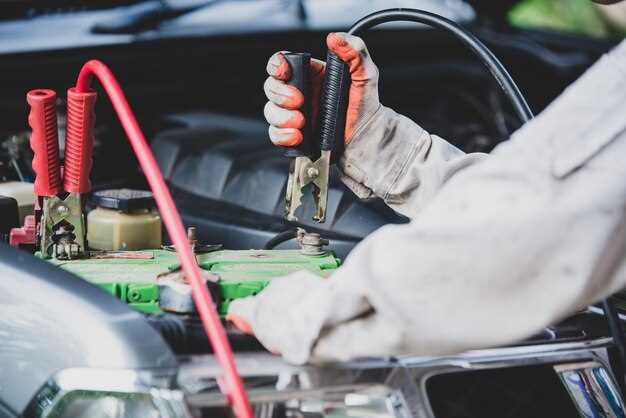
Choosing the right battery for a classic car is crucial for optimal performance and reliability. Classic cars, with their unique electrical systems and vintage components, require batteries that can cater to their specific needs. The selection process involves considering not just the physical dimensions and voltage requirements, but also the chemistry and cold cranking amps that a battery can provide.
In the world of classic automobiles, traditional lead-acid batteries have been the standard for decades. However, advancements in battery technology have introduced alternatives that offer enhanced performance and longevity. Opting for the right battery can significantly affect the driving experience, ensuring that your classic car remains a joy to operate, rather than a source of frustration.
This article will explore various battery options suitable for classic cars, detailing the key features that set them apart. From conventional lead-acid batteries to advanced lithium-ion solutions, we will highlight the advantages and disadvantages of each choice. Whether you’re restoring a vintage muscle car or maintaining a classic European model, understanding these options will help you make an informed decision.
Choosing the Right Battery Type for Vintage Vehicles

When selecting a battery for your vintage vehicle, several factors must be considered to ensure optimal performance and compatibility with the car’s electrical system. The type of battery you choose can significantly impact the reliability and longevity of your classic car.
Here are the primary battery types to consider:
- Lead-Acid Batteries:
These are the most common batteries used in vintage cars. Lead-acid batteries are reliable, widely available, and cost-effective. They come in two main styles:
- Conventional Flooded Lead-Acid: These require regular maintenance, such as checking the electrolyte levels and topping up distilled water.
- AGM (Absorbent Glass Mat): AGM batteries are sealed, maintenance-free, and better resistant to vibrations. They provide reliable power for vintage cars with additional electronic systems.
- Lithium-Ion Batteries:
While typically more expensive, lithium-ion batteries offer several advantages, including lightweight design, longer lifespan, and faster charging capabilities. They require a specific charging system that may not be compatible with all vintage cars.
- Gel Batteries:
Gel batteries are similar to AGM batteries in that they are sealed and maintenance-free. They contain a gelled electrolyte which makes them more resistant to extreme temperatures and vibration, ideal for classic cars that may be driven in diverse conditions.
To choose the best battery type for your vintage vehicle, consider the following factors:
- Compatibility: Ensure the battery fits securely in the battery tray and is compatible with the vehicle’s electrical system.
- Capacity: Look for a battery with adequate Cold Cranking Amps (CCA) to start your car, especially in colder climates.
- Weight: Keep in mind that lighter batteries may affect handling dynamics; choose a weight that balances performance and structural integrity.
- Maintenance Needs: Determine how much maintenance you are willing to perform. Opt for maintenance-free options if you seek convenience.
Ultimately, the right battery choice for your vintage vehicle depends on your specific needs, driving conditions, and preferences. Investing in a quality battery will enhance your classic car’s performance and reliability for many years to come.
Key Features to Look for in Classic Car Batteries

When selecting a battery for a classic car, it’s essential to consider specific features that cater to the unique needs of older vehicles. First and foremost, compatibility with the car’s electrical system is crucial. Many classic cars have lower voltage systems; thus, opting for a 6-volt battery instead of a standard 12-volt can ensure optimal performance.
Another important feature is the battery’s capacity, measured in amp-hours (Ah). Classic cars often require high starting power, especially in colder climates. A battery with a higher cold cranking amps (CCA) rating can provide sufficient power to start the engine reliably.
Weight and size are also significant factors. Classic cars may have specific battery compartments with limited space. Choosing the right dimensions will ensure a correct fit without compromising the overall balance of the vehicle.
Durability and lifespan are critical as well. Look for batteries that offer a longer warranty period, as this can be an indicator of quality. AGM (Absorbent Glass Mat) batteries are often recommended for classic cars due to their robustness and resistance to vibrations and temperature changes.
Finally, consider maintenance features. Some classic car batteries require regular maintenance, such as water top-ups, while others are maintenance-free. Opting for a maintenance-free battery can save time and effort, allowing you to enjoy your classic car without the hassle of frequent upkeep.
Maintaining and Testing Batteries in Classic Cars
Proper maintenance and testing of batteries in classic cars are essential to ensure reliable performance and longevity. Classic vehicles often have unique electrical requirements, which demand careful attention to the battery selection and upkeep.
Regular Inspections
Conduct regular visual inspections of the battery for corrosion, leaks, or physical damage. Corrosion can typically be found around the terminals and may require cleaning with a mixture of baking soda and water. Ensure that the terminals are securely connected and that the battery is properly mounted to avoid vibrations that could disrupt internal components.
Fluid Levels
If your classic car uses a non-sealed lead-acid battery, check the electrolyte fluid levels regularly. Top off with distilled water as necessary, ensuring that the plates are fully submerged. Never overfill the battery, as this can lead to spillage and further corrosion.
Charge Maintenance
Make use of a battery maintainer or trickle charger during periods of inactivity. Classic cars are often driven infrequently, leading to battery drain. Keeping the battery connected to a charger will help maintain optimal charge levels and prevent sulfation, a common issue with lead-acid batteries.
Testing the Battery
Testing the battery’s condition is crucial for reliable operation. A multimeter can be used to check the voltage output; a healthy battery typically shows between 12.4 to 12.7 volts when fully charged. Additionally, a load test can be performed using a load tester to simulate the battery’s performance under operational conditions, revealing any weaknesses that may not be visible through voltage checks alone.
Replacing the Battery
When it comes time to replace the battery, choose one that meets the specifications required by your classic car. Consider factors such as size, post orientation, and type (lead-acid vs. AGM) to ensure compatibility. Always disposed of old batteries properly, as they contain hazardous materials that can harm the environment.
By following these maintenance and testing guidelines, you can enhance the reliability and lifespan of your classic car’s battery, ensuring a smooth and enjoyable driving experience.
